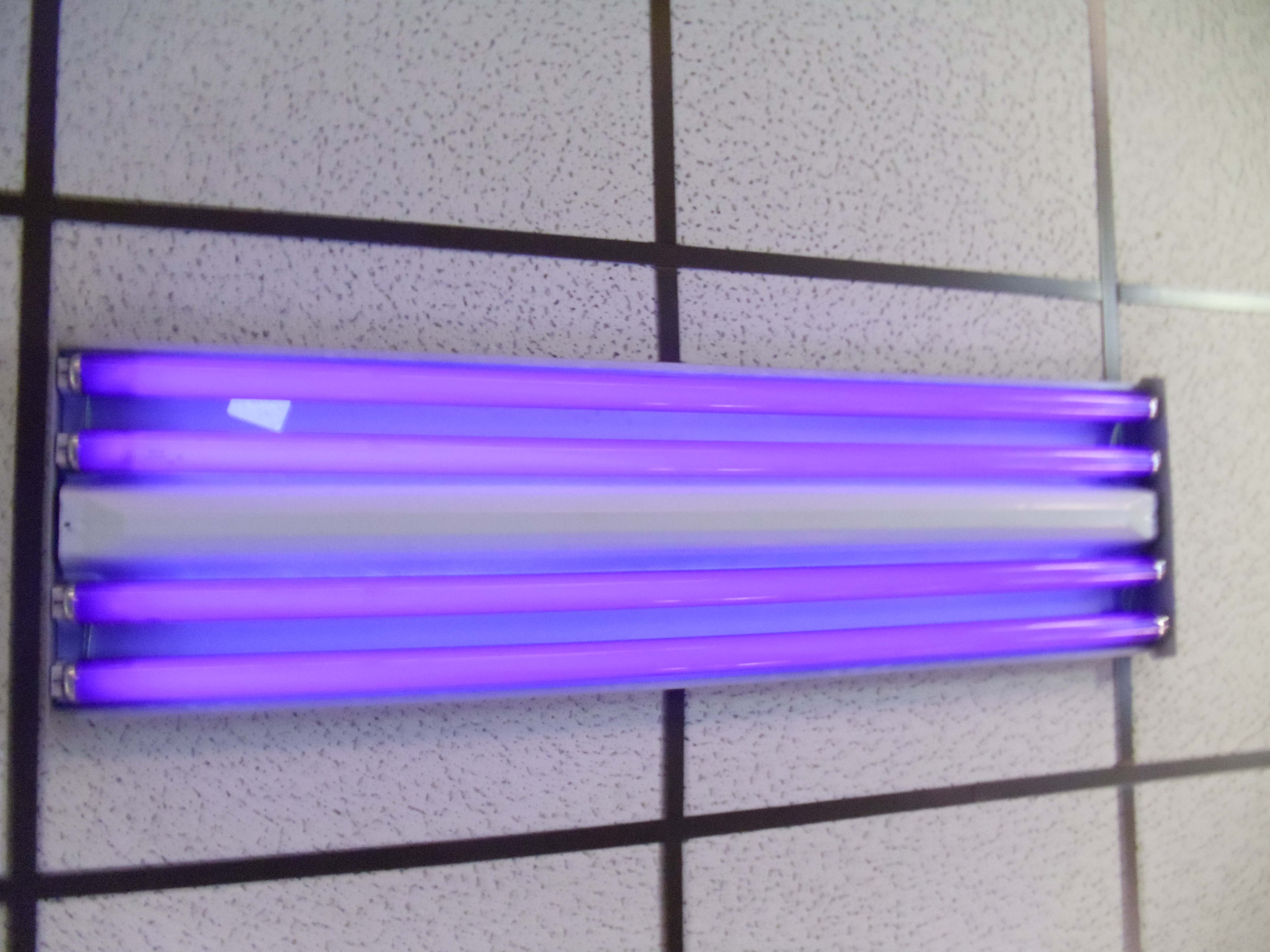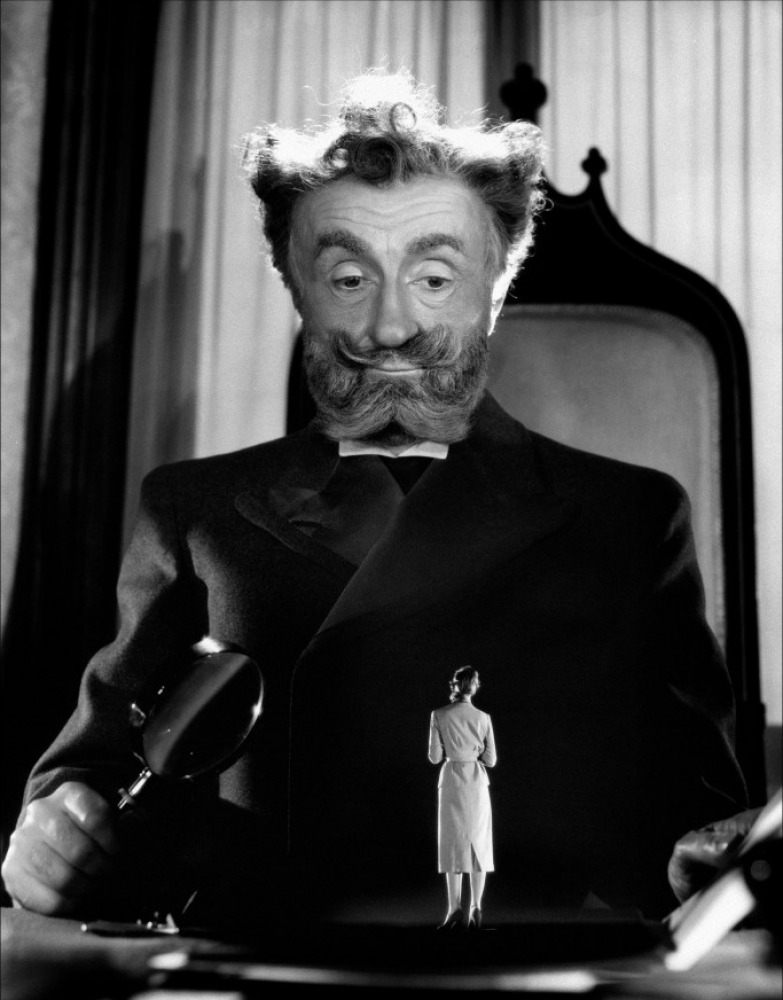|
Reverse Bluescreen
Reverse bluescreen is a visual effects technique pioneered by Jonathan Erland of Apogee Inc.(John Dykstra's company) for shooting the flying sequences in the film ''Firefox''. Its objective is to enable the matting of subjects that confound the conventional process, such as those exhibiting reflective surfaces. It derives its name from the fact that it reverses, or inverts, the basic bluescreen process. Erland received a Scientific and Engineering Award from the Academy of Motion Picture Arts and Sciences for this technique. Implementation The patented technique is a variant of the traditional bluescreen traveling matte process for composite photography. The basic bluescreen process calls for filming a subject in front of the solid blue backing, which consists of a translucent blue plastic sheet in front of banks of fluorescent lights. This process poses a problem. A reflective surface on the subject being filmed would result in blue reflections visible to the camera. Since the ... [...More Info...] [...Related Items...] OR: [Wikipedia] [Google] [Baidu] |
Visual Effect
Visual effects (sometimes abbreviated VFX) is the process by which imagery is created or manipulated outside the context of a live-action shot in filmmaking and video production. The integration of live-action footage and other live-action footage or CGI elements to create realistic imagery is called VFX. VFX involves the integration of live-action footage (which may include in-camera special effects) and generated-imagery (digital or optics, animals or creatures) which look realistic, but would be dangerous, expensive, impractical, time-consuming or impossible to capture on film. Visual effects using computer-generated imagery (CGI) have more recently become accessible to the independent filmmaker with the introduction of affordable and relatively easy-to-use animation and compositing software. History Early developments In 1857, Oscar Rejlander created the world's first "special effects" image by combining different sections of 32 negatives into a single image, making a m ... [...More Info...] [...Related Items...] OR: [Wikipedia] [Google] [Baidu] |
John Dykstra
John Charles Dykstra, A.S.C. (; born June 3, 1947) is an American special effects artist, pioneer in the development of the use of computers in filmmaking and recipient of three Academy Awards, among many other awards and prizes. He was one of the original employees of Industrial Light & Magic, the special effects and computer graphics division of Lucasfilm. He is well known as the special effects lead on the original ''Star Wars'', helping bring the original visuals for lightsabers, space battles between X-wings and TIE fighters, and Force powers to the screen. He also led special effects on many other movies, including ''Batman Forever'', '' Batman & Robin'', ''Stuart Little'', '' X-Men: First Class'', ''Spider-Man'' and ''Spider-Man 2''. Education and early career Dykstra was born in Long Beach, California. After studying industrial design at California State University, Long Beach (where he was a member of Phi Kappa Tau fraternity), in 1971 he landed a job working with Dougl ... [...More Info...] [...Related Items...] OR: [Wikipedia] [Google] [Baidu] |
Firefox (movie)
''Firefox'' is a 1982 American action techno-thriller film produced, directed by and starring Clint Eastwood. It is based upon the 1977 novel of the same name by Craig Thomas. The film was set in Russia, but Cold War considerations had Eastwood's and Fritz Manes's Malpaso Company using Vienna and other locations in Austria to double for many of the Eurasian story locations. One source indicates that the film was shot on a $21 million budget, the largest production budget ever for Malpaso. Another source indicates that over $20 million was spent on special effects. Plot A joint British-American plot is devised to steal a highly advanced Soviet fighter aircraft ( MiG-31, NATO code name "Firefox") which is capable of Mach 6 (hypersonic flight), is invisible to radar, and carries weapons controlled by thought. Former United States Air Force Major Mitchell Gant, a Vietnam veteran, ex member of the Aggressor squadron and former prisoner of war, infiltrates the Soviet Union, a ... [...More Info...] [...Related Items...] OR: [Wikipedia] [Google] [Baidu] |
Chroma Key
Chroma key compositing, or chroma keying, is a visual-effects and post-production technique for compositing (layering) two images or video streams together based on colour hues ( chroma range). The technique has been used in many fields to remove a background from the subject of a photo or video – particularly the newscasting, motion picture, and video game industries. A colour range in the foreground footage is made transparent, allowing separately filmed background footage or a static image to be inserted into the scene. The chroma keying technique is commonly used in video production and post-production. This technique is also referred to as colour keying, colour-separation overlay (CSO; primarily by the BBC), or by various terms for specific colour-related variants such as green screen or blue screen; chroma keying can be done with backgrounds of any colour that are uniform and distinct, but green and blue backgrounds are more commonly used because they differ most di ... [...More Info...] [...Related Items...] OR: [Wikipedia] [Google] [Baidu] |
Matte (filmmaking)
Mattes are used in photography and special effects filmmaking to combine two or more image elements into a single, final image. Usually, mattes are used to combine a foreground image (e.g. actors on a set) with a background image (e.g. a scenic vista or a starfield with planets). In this case, the matte is the background painting. In film and stage, mattes can be physically huge sections of painted canvas, portraying large scenic expanses of landscapes. In film, the principle of a matte requires masking certain areas of the film emulsion to selectively control which areas are exposed. However, many complex special-effects scenes have included dozens of discrete image elements, requiring very complex use of mattes and layering mattes on top of one another. For an example of a simple matte, the director may wish to depict a group of actors in front of a store, with a massive city and sky visible above the store's roof. There would be two images—the actors on the set, and the imag ... [...More Info...] [...Related Items...] OR: [Wikipedia] [Google] [Baidu] |
Composite Photography
Compositing is the process or technique of combining visual elements from separate sources into single images, often to create the illusion that all those elements are parts of the same scene. Live-action shooting for compositing is variously called "chroma key", "blue screen", "green screen" and other names. Today, most, though not all, compositing is achieved through digital image manipulation. Pre- digital compositing techniques, however, go back as far as the trick films of Georges Méliès in the late 19th century, and some are still in use. Basic procedure All compositing involves the replacement of selected parts of an image with other material, usually, but not always, from another image. In the digital method of compositing, software commands designate a narrowly defined color as the part of an image to be replaced. Then the software (e.g. Natron) replaces every pixel within the designated color range with a pixel from another image, aligned to appear as part of the ... [...More Info...] [...Related Items...] OR: [Wikipedia] [Google] [Baidu] |
Fluorescent Paint
Luminous paint or luminescent paint is paint that exhibits luminescence. In other words, it gives off visible light through fluorescence, phosphorescence, or radioluminescence. There are three types of luminous paints: fluorescent paint, phosphorescent paint and radioluminescent paint. Fluorescent paint Fluorescent paints 'glow' when exposed to short-wave ultraviolet (UV) radiation. These UV wavelengths are found in sunlight and many artificial lights, but the paint requires a special black light to view so these glowing-paint applications are called 'black-light effects'. Fluorescent paint is available in a wide range of colors and is used in theatrical lighting and effects, posters, and as entertainment for children. The fluorescent chemicals in fluorescent paint absorb the invisible UV radiation, then emit the energy as longer wavelength visible light of a particular color. Human eyes perceive this light as the unusual 'glow' of fluorescence. The painted surface also re ... [...More Info...] [...Related Items...] OR: [Wikipedia] [Google] [Baidu] |
Blacklight
A blacklight, also called a UV-A light, Wood's lamp, or ultraviolet light, is a lamp that emits long-wave (UV-A) ultraviolet light and very little visible light. One type of lamp has a violet filter material, either on the bulb or in a separate glass filter in the lamp housing, which blocks most visible light and allows through UV, so the lamp has a dim violet glow when operating. Blacklight lamps which have this filter have a lighting industry designation that includes the letters "BLB". This stands for "blacklight blue". A second type of lamp produces ultraviolet but does not have the filter material, so it produces more visible light and has a blue color when operating. These tubes are made for use in "bug zapper" insect traps, and are identified by the industry designation "BL". This stands for "blacklight". Blacklight sources may be specially designed fluorescent lamps, mercury-vapor lamps, light-emitting diodes (LEDs), lasers, or incandescent lamps. In medicine, for ... [...More Info...] [...Related Items...] OR: [Wikipedia] [Google] [Baidu] |
Motion Control Photography
Motion control photography is a technique used in Photograph, still and motion photography that enables precise control of, and optionally also allows repetition of, camera movements. It can be used to facilitate special effects photography. The process can involve filming several elements using the same camera motion, and then compositing the elements into a single image. Other effects are often used along with motion control, such as chroma key to aid the compositing. Motion control camera rigs are also used in still photography with or without compositing; for example in Long-exposure photography, long exposures of moving vehicles. Today's computer technology allows the programmed camera movement to be processed, such as having the move scaled up or down for different sized elements. Common applications of this process include shooting with Miniature effect, miniatures, either to composite several miniatures or to composite miniatures with full-scale elements. The process is ... [...More Info...] [...Related Items...] OR: [Wikipedia] [Google] [Baidu] |
Special Effects
Special effects (often abbreviated as SFX, F/X or simply FX) are illusions or visual tricks used in the theatre, film, television, video game, amusement park and simulator industries to simulate the imagined events in a story or virtual world. Special effects are traditionally divided into the categories of mechanical effects and optical effects. With the emergence of digital film-making a distinction between special effects and visual effects has grown, with the latter referring to digital post-production and optical effects, while "special effects" refers to mechanical effects. Mechanical effects (also called practical or physical effects) are usually accomplished during the live-action shooting. This includes the use of mechanized props, scenery, scale models, animatronics, pyrotechnics and atmospheric effects: creating physical wind, rain, fog, snow, clouds, making a car appear to drive by itself and blowing up a building, etc. Mechanical effects are also often inco ... [...More Info...] [...Related Items...] OR: [Wikipedia] [Google] [Baidu] |


.jpg)



